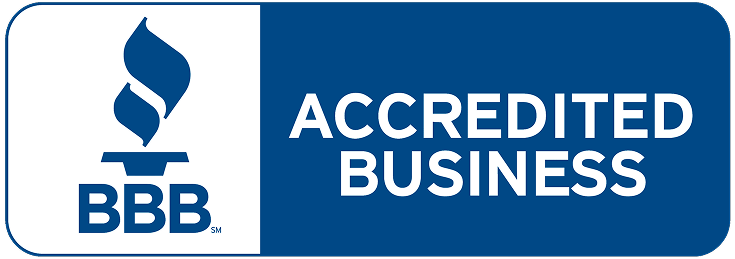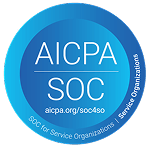International study programs: Mechanical Engineering
Earning a master’s degree in mechanical engineering is a desired academic pursuit among international students for the postgraduation career opportunities, ability to apply for a 24-month extension of your STEM optional practical training (STEM OPT) right after graduation, and earning potential.
If you want to deepen your knowledge and skill in mechanical engineering through a master’s international study program, here’s the type of curriculum you can expect as well as job opportunities after graduating.
About mechanical engineering programs
A master’s degree in mechanical engineering prepares students for complex engineering roles in the private and public sector. It also provides a pathway toward research-based professions for students who plan on pursuing an academic career.
The curriculum you’ll face when enrolling in a Master’s of Science (MS) program in mechanical engineering varies between schools. Generally, you’ll enhance your knowledge in designing and manufacturing thermal devices and their processes, and other mechanical systems. This enhanced learning is achieved through a multidisciplinary curriculum that includes advanced mathematics, scientific principles, design and specialized technology.
Some programs offer emphasis areas or disciplines that students can choose from, like mechanical system design, robotics and thermo-fluids. Coursework includes applied heat and mass transfer; engineering analytical methods and analysis; and kinetics and material structure and their properties.
During your studies, completing a master’s thesis or research project might be a requirement of your school’s mechanical engineering MS program. An MS in mechanical engineering can also advance your knowledge in this field toward a doctor of philosophy (Ph.D.) in mechanical engineering.
Ultimately, this advanced degree is designed to support your real-world skills. For instance, if you work in the aerospace industry, you can leverage knowledge acquired from your mechanical engineering graduate program to troubleshoot inefficiencies or issues of planetary surface exploration devices, like a rover.
Demand for mechanical engineering degrees
According to the U.S. Census Bureau’s most recent data in its 2022 American Community Survey, nearly 32% of students who earned a bachelor’s degree in mechanical engineering went on to get a master’s degree.
The 2023 Open Doors Report by the Institute of International Education (IIE) assessed international student enrollment at the graduate level. It found that during the 2022-23 academic year, graduate program enrollment among international students increased by 21% compared to the prior academic year.
As many as 202,801 students enrolled in an engineering field of study, according to IIE’s report, an almost 8% increase compared to 2021-22 school year.
Five schools with mechanical engineering programs from our list of over 500+ eligible schools*
For help navigating your options for a postgraduate degree in mechanical engineering, be sure to consult MPOWER’s eligible schools list. MPOWER considers schools that offer the most competitive mechanical engineering programs for students studying in the U.S.
Here are five MPOWER-eligible schools to consider:
1. Georgia Institute of Technology (Georgia Tech)
Known for its technological innovation and connection to Atlanta’s aerospace, robotics and automotive industries, Georgia Tech is ranked among the top engineering programs nationwide. Georgia Tech students studying mechanical engineering develop methods of advanced analysis and work collaboratively to publish cutting-edge research.
2. Lehigh University
Lehigh’s master’s in mechanical engineering emphasizes interdisciplinary education and hands-on practical experience. International students studying in the U.S. at Lehigh work alongside internationally renowned faculty as they make innovative discoveries in the field of mechanical engineering.
3. Michigan Technological University (Michigan Tech)
Michigan Tech is a premier engineering school in the Midwest. Students in Michigan Tech’s engineering program benefit from extensive research opportunities related to robotics, materials science, sustainability and more. Small classes allow for intimate mentoring from professors, and the broad coursework affords students flexibility within the program.
4. Texas A&M University
Texas A&M’s mechanical engineering program is one of the largest in the country. In Texas A&M’s world-class laboratories, students can apply their knowledge to areas like materials science, thermodynamics and energy systems.
5. University of Dayton
The Department of Mechanical and Aerospace Engineering at the University of Dayton offers a well-rounded mechanical engineering program. Students work with industry giants at research facilities and learn from academic leaders in the classroom, where they have the opportunity to concentrate in engineering mechanics, energy, materials, thermofluids or robotics.
For international students studying in the U.S., top-ranking schools like Lehigh and Georgia Tech, with their myriad industry connections and robust alumni networks, can set you up for a lucrative and meaningful career as a mechanical engineer. MPOWER is committed to providing international students with access to the best academic programs the U.S. and Canada have to offer. To jumpstart your engineering career in the U.S., check out MPOWER’s list of 500+ eligible schools today.
*Schools mentioned in this post do not endorse MPOWER’s loans and MPOWER is not affiliated with the schools noted in this message.
Five jobs you can get with a mechanical engineering degree
In addition to gaining advanced knowledge and skills in the area of mechanical engineering, earning a master’s degree can help advance one’s career and gain competitive wages. If you’re curious what kind of work you can do with a mechanical engineering degree, here are just a few options and their salaries.
1. Radar signal processing engineer
Radar signal processing engineers are tasked with researching, designing, testing and implementing signal processing algorithms for radar systems. You’d identify inefficiencies and discrepancies of new or existing algorithms while ensuring that systems adhere to compliance and regulatory requirements.
According to ZipRecruiter data, the national average annual salary for a radar signal processing engineer is US$131,250. The top 90th percentile of workers in this profession earn US$147,000 per year.
2. Mechanical design engineer
If you enjoy being an integral part of a product’s or system’s mechanical design from beginning to end, a career as a mechanical design engineer might be a fit. You’ll perform industry and competitive research to stay on top of new processes and techniques, design new products or improve upon existing ones using specialized software like 3D modeling and AutoCAD and test prototypes you’ve created.
ZipRecruiter states that the national average salary for mechanical design engineers is US$91,578. Engineers in the 90th percentile making US$122,500 per year on average are considered the top earners.
3. Principal mechanical engineer
Principal mechanical engineers are senior-level mechanical engineers. They typically have a graduate degree and an average of eight or more years of experience in the field. Many mechanical engineers work in the manufacturing sector, though this profession is broad and can be found in other industries, like health care and aeronautics.
As a principal mechanical engineer, you’ll research, create, validate and support new and existing designs and systems for clients. Additionally, as the principal on a team, you’re responsible for communicating across various engineering teams and potentially managing the project timeline and budget.
According to Glassdoor data, the average annual salary for a principal mechanical engineer is US$154,977. Top earners, however, can make an average base salary as high as US$187,000.
4. Thermal and fluids engineer
Thermal and fluids engineers are specialists in thermodynamics, fluid mechanics and heat and mass transfer. With this knowledge, they create, maintain and repair mechanical systems that convert heat-based energy through fluids into other energy forms. You’ll assess how heat within a mechanical system works in conjunction with other systems through modeling and other predictive methods.
The national average annual pay of a thermal and fluids engineer, according to ZipRecruiter, is US$104,528. However, mechanical engineers with an MS degree could earn more competitive wages; top earners in the 90th percentile of the profession earn US$160,500 per year.
5. Architectural and engineering manager
Architectural and engineering managers take the lead in coordinating and directing plans for products, processes and systems. As an architectural and engineering manager, you’ll also be charged with hiring, training and managing a team and determining equipment needs and budgets for project proposals. In addition to setting objectives and delegating responsibilities to various staff, you’re also responsible for collaborating with other teams with a stake in the project.
According to the U.S. Bureau of Labor Statistics, the median annual wage for this job is US$165,370 with the highest earners making more than US$233,590 per year.
Final thoughts: Getting an engineering degree in the U.S.
Earning an MS degree in mechanical engineering is a strong step to gaining depth in this area of study and opening doors to potential career advancement later on. Whether a mechanical engineering master’s degree is worth it, however, depends on the concentration you pursue, the industry you work in and the real-life experience you develop by the close of your graduate program.
Paying your way through this academic path can be challenging, especially if you’ve already maximized other gift-based financial aid, like grants and scholarships. If you need more financial aid to pay for school, an MPOWER Financing international student loan can help cover funding gaps for your graduate program.

